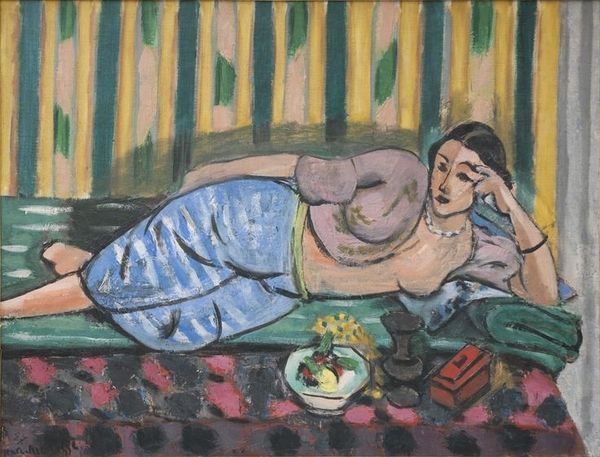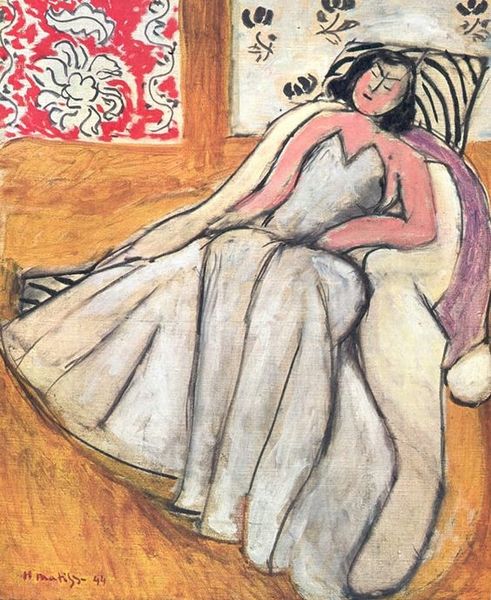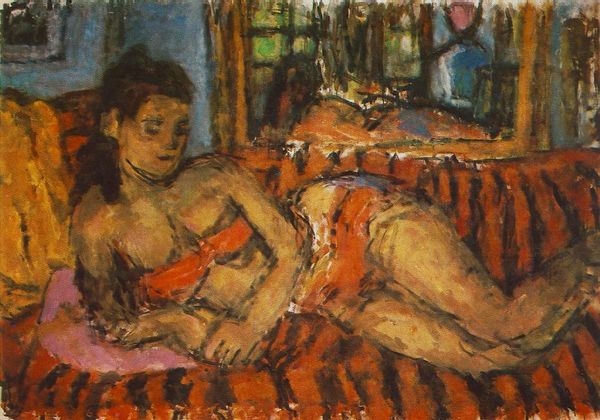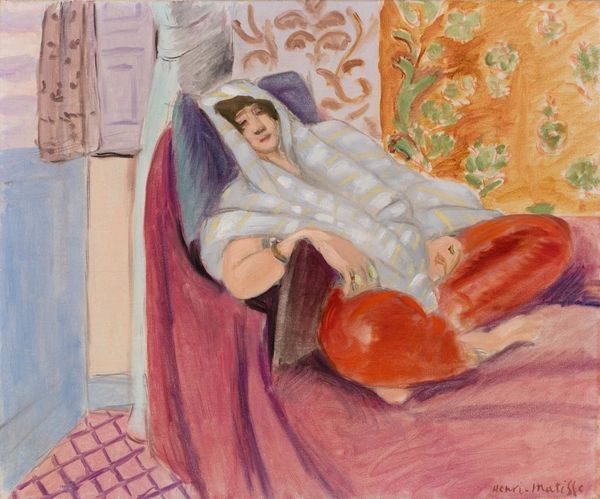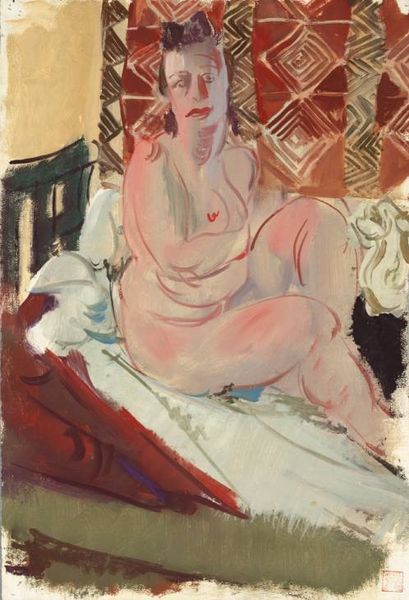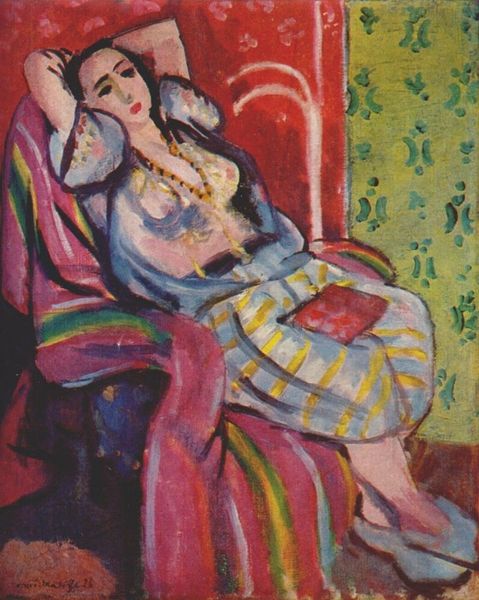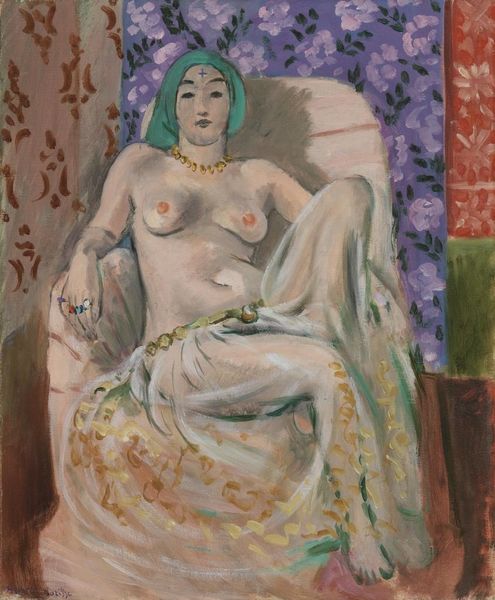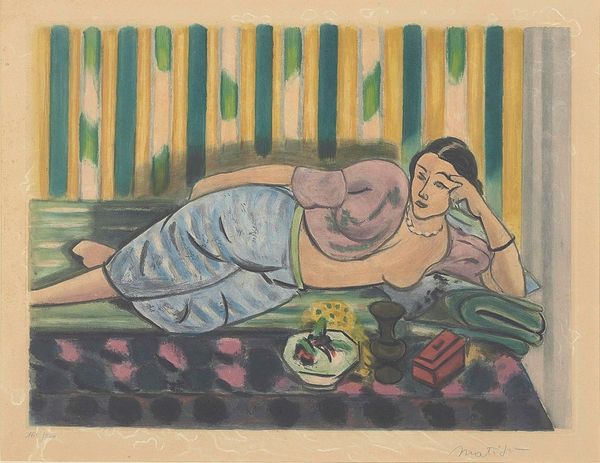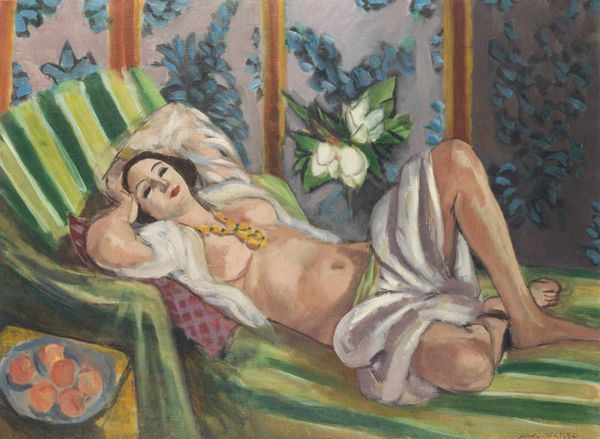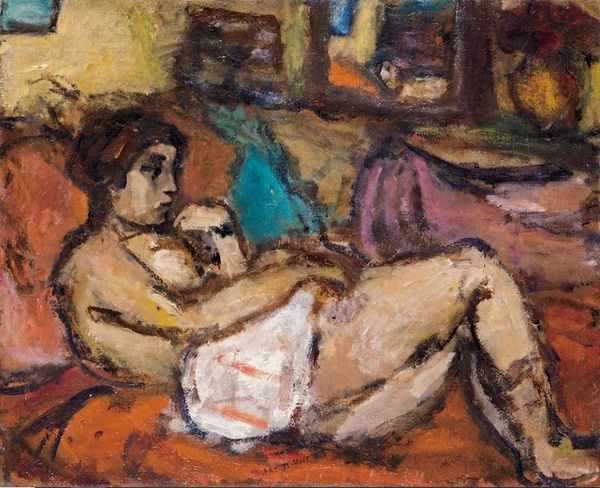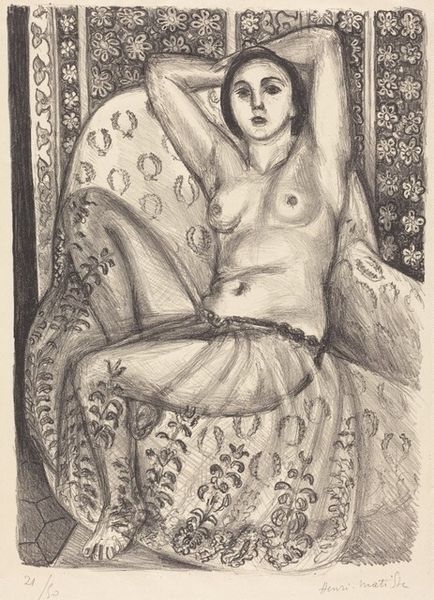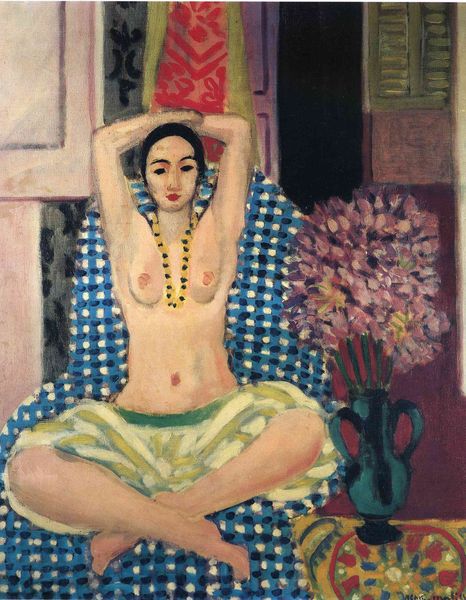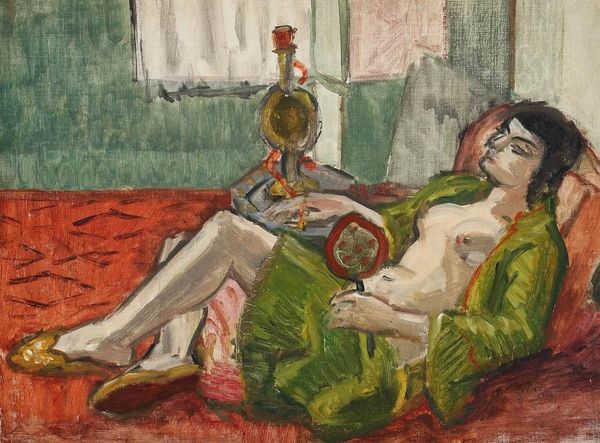
Copyright: Public domain US
Editor: Henri Matisse's "Woman on Rose Divan," painted in 1921 with oil paints, strikes me as quite intimate. The way the patterns and colors blend is captivating. What story do you think it’s telling? Curator: The painting belongs to Matisse’s Nice period, a time when he seemed focused on exploring orientalism within a domestic French setting. Think about France's colonial presence at the time, particularly in North Africa. Do you think that might be playing a role in how we understand the scene depicted? Editor: It's an interesting observation, connecting the piece to France's colonial ambitions. Does that connection affect how the woman is perceived? Curator: Absolutely. Considering that context, are we viewing a mere domestic scene, or is Matisse participating in a wider visual culture, where power dynamics between France and its colonies are reproduced? Editor: So, rather than simply appreciating the patterns, it prompts us to critically examine who gets to be depicted, and how, within the socio-political climate of that period. It moves beyond just personal expression, doesn’t it? Curator: Precisely. It highlights how the art world and artists themselves are rarely separate from wider cultural and political issues. What may look aesthetically pleasing might contain complex commentaries about historical power relations. Editor: This piece reveals a much richer and thoughtful analysis beyond aesthetics and intimacy. Thank you for enlightening me! Curator: Indeed, viewing it in a socio-historical setting has broadened its interpretation, I must say!
Comments
No comments
Be the first to comment and join the conversation on the ultimate creative platform.
